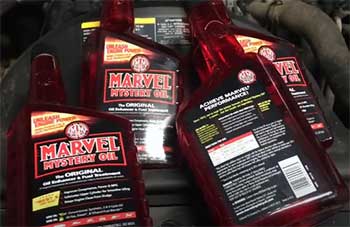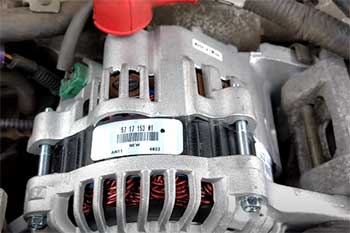I’m no mechanic, but I know a good thing when I see it, and DuraMAX full synthetic oil is one of those finds that makes you feel like you’ve cracked the code on car maintenance.
If you’re hunting for an oil that delivers performance, protects your engine, and doesn’t break the bank, this is it.
Trust me, after using it in my own ride, I’m sold. In this article, I’ll walk you through my experience, break down the pros and cons, compare it to other brands, and share maintenance tips to keep your engine purring. Ready?
Let’s get started.
My Journey With DuraMAX Full Synthetic Oil
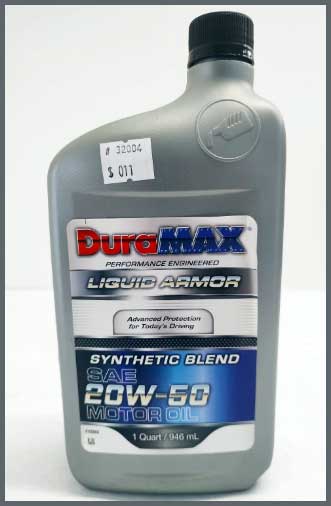
Picture this: I’m standing in the auto parts aisle, staring at a wall of oil bottles, feeling like I need a PhD to pick one.
My 2018 Honda CR-V has been my trusty steed for years, but I’ve been guilty of grabbing whatever oil was on sale.
Then, a mechanic friend mentioned DuraMAX full synthetic oil.
He swore by it for his shop’s quick lubes, and I figured, why not give it a shot? I grabbed a case of the 5W-20 full synthetic and decided to put it to the test.
The first thing I noticed was the price—around $4 a quart when bought in bulk, which was a steal compared to the $8-$10 I’d been shelling out for other synthetics.
I was skeptical, though.
Could something this affordable really hold up?
I popped the hood, drained the old stuff, and poured in the DuraMAX. The process was smooth, and the oil had a nice, clean look to it, not that I’m an expert on oil aesthetics.
Over the next few weeks, I paid close attention to how my CR-V felt. The engine seemed quieter, especially during cold starts in the morning. I live in a place where winters dip below freezing, and I’d gotten used to that sluggish startup groan.
With DuraMAX, it was like my engine woke up ready to roll. I also noticed a slight uptick in fuel economy—about half a mile per gallon better on my daily commute. Nothing earth-shattering, but enough to make me smile at the pump.
I pushed the oil to about 8,000 miles before changing it, which is longer than I’d usually go with a synthetic blend. The oil still looked decent when I drained it, not too dark or sludgy.
I sent a sample to a lab for analysis (yeah, I got a little nerdy), and the report came back clean—no excessive wear metals, and the viscosity held up well. That sealed the deal for me. DuraMAX wasn’t just cheap; it was legit. I’ve been using it for two years now, and my engine’s still running like a dream.
What Makes DuraMAX Full Synthetic Oil Stand Out?
- Engine Protection That Packs a Punch
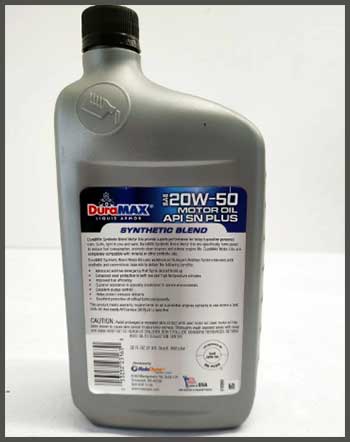
Let’s talk about why DuraMAX full synthetic oil has earned my loyalty.
First off, it’s a beast when it comes to protecting your engine.
The oil uses a Group III synthetic base, which is a step up from conventional oils and holds its own against pricier competitors.
I’ve put my CR-V through its paces—long highway trips, stop-and-go city traffic, and even some light off-roading—and DuraMAX keeps the engine clean and wear-free.
The advanced detergent additives in this oil are like a cleaning crew for your engine, tackling sludge and deposits before they can cause trouble.
My oil analysis showed minimal buildup, which means my engine’s staying healthy even after high-mileage intervals.
- Fuel Efficiency That Saves You Cash
Another thing I love is how DuraMAX helps stretch your gas budget. The oil’s formulation reduces friction, which means your engine doesn’t have to work as hard. I noticed that slight bump in MPG, and over time, it adds up.
For someone like me, who drives about 15,000 miles a year, that’s real money saved. It’s not going to turn your gas guzzler into a hybrid, but it’s a nice bonus that makes filling up a little less painful.
- Cold Weather Performance That Won’t Let You Down
If you live somewhere with brutal winters, you’ll appreciate DuraMAX’s cold-weather performance. The 5W-20 and 0W-20 grades flow smoothly even when the temperature plummets.
I’ve had mornings where my dashboard reads 10°F, and my engine starts without a hitch. That’s because DuraMAX maintains its viscosity in low temperatures, ensuring your engine gets lubricated right away.
No more cringing at that dry-start grind.
- Affordability Without Sacrificing Quality
Let’s be real—car maintenance can feel like a money pit. DuraMAX full synthetic oil is a breath of fresh air because it’s priced like a budget oil but performs like a premium one.
At $4-$5 a quart, it’s half the cost of some big-name brands, yet it meets tough industry standards like API SP and ILSAC GF-6A. I’m all about getting bang for my buck, and DuraMAX delivers without making me feel like I’m cheaping out on my car.
- Compatibility with Modern Engines
DuraMAX is formulated to play nice with today’s high-tech engines, including turbocharged and direct-injection setups. My CR-V has a turbo, and I was worried about low-speed pre-ignition issues that can plague these engines.
DuraMAX’s additives are designed to handle those demands, and I haven’t had any hiccups. It’s also got GM’s dexos1 Gen 2 approval, which is a big deal if you drive a Chevy or GMC. Knowing my oil meets those specs gives me peace of mind.
The Flip Side: Where DuraMAX Falls Short?
- Limited Availability Can Be a Hassle
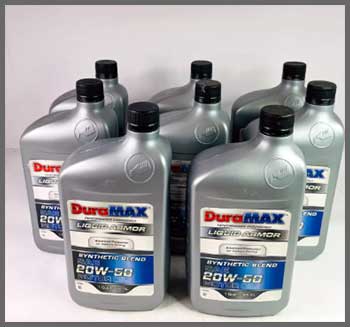
Okay, let’s talk about the not-so-great stuff. One of my biggest gripes with DuraMAX is that it’s not always easy to find.
Unlike Mobil 1 or Castrol, which are stocked at every Walmart and auto parts store, DuraMAX is more of a niche player.
It’s big in the quick-lube world, but for DIYers like me, you might have to order it online from places like Grainger or Amazon.
I’ve had to plan ahead to make sure I have enough for my oil changes, which can be a pain if you’re used to grabbing oil off the shelf.
- Lower Zinc Content for Classic Cars
If you’re a classic car enthusiast, DuraMAX might not be your best bet. I learned this the hard way when I tried it in my buddy’s 1970 Mustang with a flat-tappet engine.
The oil’s zinc content is around 760 ppm, which is fine for modern engines but too low for older ones that need more anti-wear protection. My friend noticed some valve train noise after a few hundred miles, so we switched to a high-zinc oil like Lucas Hot Rod.
If you’ve got a vintage ride, you’ll want to look elsewhere.
- Brand Recognition Lags Behind
DuraMAX doesn’t have the name recognition of brands like Pennzoil or Valvoline, and that can make you second-guess it. When I first bought it, I wondered if I was rolling the dice with some no-name oil.
It’s made by RelaDyne, a reputable company, but they’re not exactly a household name. The lack of flashy marketing can make you feel like you’re missing out on something better, even though the oil itself holds up.
- Not Ideal for Extreme Performance
While DuraMAX is great for everyday driving, it’s not built for extreme performance. If you’re racing your car or towing heavy loads in a diesel truck, you might want an oil with a more robust additive package.
I haven’t pushed my CR-V to those limits, but I’ve read forum posts from Duramax diesel owners who prefer oils like Shell Rotella T6 for their heavy-duty needs. DuraMAX is solid, but it’s not trying to compete with boutique oils for track days.
Tips To Get The Most Out of DuraMAX
- Stick to Your Manufacturer’s Oil Change Intervals
One of the best ways to keep your engine happy with DuraMAX is to follow your vehicle’s oil change schedule. My CR-V’s manual recommends 7,500 miles for synthetic oil, but I check the oil life monitor, which adjusts based on driving conditions.
If you’re doing a lot of city driving or towing, you might need to change it sooner—around 5,000 miles. Don’t push it too far just because it’s synthetic; even great oil gets dirty. I learned this after stretching an interval to 10,000 miles once and noticing the oil was darker than usual.
- Use a Quality Oil Filter
The oil is only as good as the filter it’s paired with. I’ve had great results with Wix and Baldwin filters, which catch contaminants without restricting flow. Cheap filters can clog up or fail, letting debris sneak into your engine.
I made the mistake of using a bargain-bin filter once, and my oil pressure gauge started acting wonky. Spend a few extra bucks on a good filter—it’s worth it for the peace of mind.
- Check Your Oil Level Regularly
Even full synthetic oils can burn off a little, especially in turbo engines. I check my oil level every couple of weeks, usually when I’m filling up gas. It’s a quick habit that can save you from running low.
My CR-V hasn’t needed a top-off yet, but my buddy’s Tacoma burned through a quart after 6,000 miles with DuraMAX. Keep an eye on the dipstick, and don’t be afraid to add a little if it’s low.
- Store Your Oil Properly
If you’re buying DuraMAX in bulk like I do, storage matters. I keep my extra quarts in a cool, dry garage to prevent degradation. Heat and moisture can mess with the oil’s additives, so avoid leaving it in a hot shed or damp basement.
I also label the containers with the purchase date to make sure I’m using the freshest oil first. It’s a small step, but it keeps the oil in top shape.
- Follow Your Vehicle’s Maintenance Schedule
DuraMAX comes with a Liquid Armor Engine Warranty that covers up to 10 years or 300,000 miles, but only if you stick to your manufacturer’s maintenance schedule. That means regular oil changes, air filter replacements, and emission system checks.
I keep a logbook in my glovebox to track everything, and I save my receipts in case I ever need to file a warranty claim. It’s a bit of paperwork, but it’s worth it for the extra protection.
How DuraMAX Stacks Up Against Other Brands?
- DuraMAX Vs. STP Full Synthetic Motor Oil
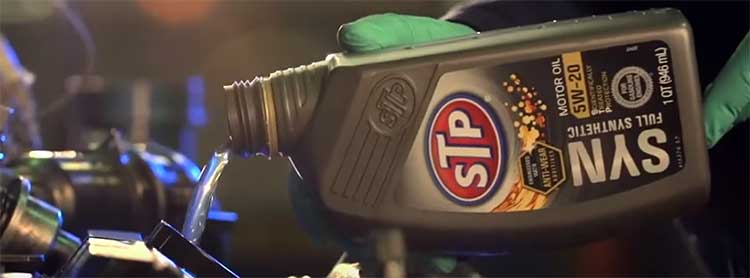
Let’s kick things off with STP Full Synthetic Motor Oil, a budget-friendly option that’s easy to find at most auto parts stores. I tried STP in my CR-V a while back, drawn by its $5-per-quart price tag and bold claims of engine protection.
STP uses a Group III synthetic base, like DuraMAX, and meets API SP standards, so it’s solid for everyday driving. I noticed decent fuel economy and smooth engine performance, but the oil seemed to darken faster than DuraMAX—by 6,000 miles, it looked grimy when I checked the dipstick.
DuraMAX, on the other hand, stayed cleaner longer, and my oil analysis showed less sludge buildup. STP’s additives felt a bit basic compared to DuraMAX’s robust detergent package, which gives DuraMAX an edge in keeping your engine spotless.
For the price, STP’s a good pick, but DuraMAX offers better value and longevity for just a few cents more per quart.
- DuraMAX Vs. Pennzoil Ultra Platinum Full Synthetic Motor Oil
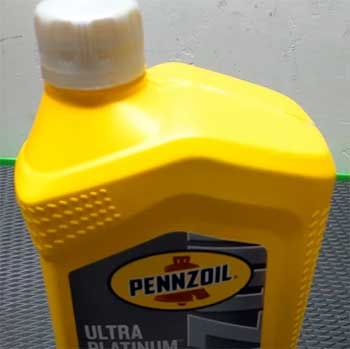
Next up is Pennzoil Ultra Platinum, a premium oil that’s all about cleanliness and performance.
I gave it a spin after hearing about its PurePlus Technology, which starts with natural gas for a purer base oil.
In my CR-V, Pennzoil delivered a silky-smooth ride, and my oil analysis showed impressively low deposits—almost as clean as DuraMAX.
It’s also got a slight edge in high-temperature stability, which is great if you live in a scorching climate.
But at $8-$9 a quart, Pennzoil’s a splurge, and I didn’t notice enough of a difference in fuel economy or cold-weather starts to justify the cost.
DuraMAX matches Pennzoil’s engine protection for most drivers and saves you enough to buy a nice lunch.
Unless you’re pushing your engine to the limit, DuraMAX is the smarter buy.
- DuraMAX Vs. Mobil 1 Full Synthetic Motor Oil
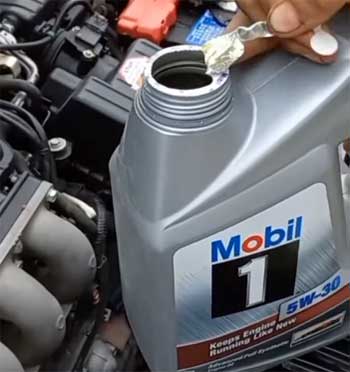
Finally, let’s talk about Mobil 1, the heavyweight champ of synthetic oils.
I used Mobil 1 for a year before switching to DuraMAX, and it’s easy to see why it’s a favorite.
Its Group IV/V base oil is top-tier, offering unbeatable protection for high-performance engines or extreme conditions like track driving.
My CR-V felt like it was gliding, especially at highway speeds, and Mobil 1’s thermal stability is tough to beat. But here’s the rub: Mobil 1 costs $8-$10 a quart, nearly double DuraMAX’s price.
For my daily commute and occasional road trips, DuraMAX’s Group III base and strong additive package get the job done just as well.
I didn’t see enough of a performance gap to warrant the extra cash, especially since DuraMAX’s cold-weather flow and fuel economy perks are on par.
Mobil 1’s great for enthusiasts, but DuraMAX is the practical choice for most of us.
Frequently Asked Questions (FAQ)
DuraMAX is produced by RelaDyne, a Cincinnati-based company that’s one of the top lubricant distributors in the U.S. They’ve been in the game since 2010, blending oils for quick lubes, dealers, and DIYers. RelaDyne’s focus is on affordable, high-quality products, and they’ve built a solid rep in the automotive world.
DuraMAX full synthetic oil can last up to 10,000 miles under ideal conditions, but I’d stick to 7,500 miles for most vehicles to be safe. If you’re driving in tough conditions—like heavy traffic or extreme heat—consider changing it every 5,000 miles. Always check your owner’s manual for specific recommendations.
DuraMAX has been the top-selling oil brand among quick lube shops since 2018, according to the NOLN Fast Lube Operator Survey. It’s not as flashy as Mobil 1 or Castrol, but its performance and price have made it a favorite for installers. In terms of quality, it’s a solid mid-tier synthetic that punches above its weight.
For a Duramax diesel engine, I’d lean toward Shell Rotella T6 5W-40 full synthetic. It’s designed for heavy-duty diesels, with better wear protection and shear stability for towing and high loads. DuraMAX full synthetic is fine for lighter diesel use, but Rotella T6 is the go-to for most Duramax owners I’ve talked to.
Wrapping It Up: Why DuraMAX Is My Go-To?
After two years of using DuraMAX full synthetic oil, I’m hooked. It’s affordable, reliable, and keeps my engine running like new. Whether you’re a daily commuter or a weekend warrior, this oil delivers the protection and performance you need without the premium price tag.
From its fuel-saving perks to its cold-weather prowess, DuraMAX has earned its place in my garage. Give it a try—you’ll wonder why you didn’t switch sooner.
